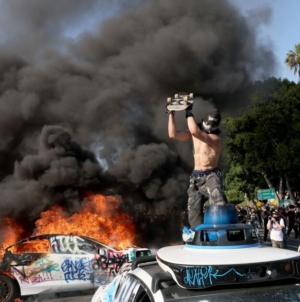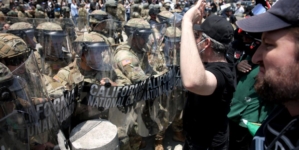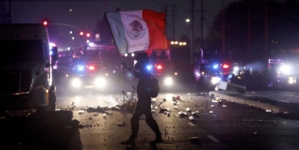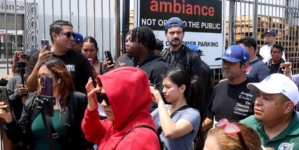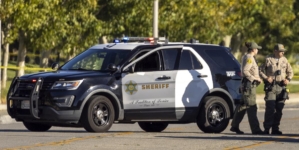-
RBC Canadian Open: Ryan Fox Bests Sam Burns in Pillow-Fight Playoff - 23 mins ago
-
Blue Jays vs. Twins Highlights | MLB on FOX - 31 mins ago
-
Rory McIlroy’s Stunning Admission of ‘Concern’ for US Open - about 1 hour ago
-
DC Defenders vs. St. Louis Battlehawks Highlights | United Football League - about 1 hour ago
-
Retail trade rebounds: broad-based growth in food, non-food and fuel sales - 2 hours ago
-
Viral Beauty Routines Are Damaging Tween and Teen Skin, Study Warns - 2 hours ago
-
‘I gave it my all’: Ronaldo sheds tears of joy after Portugal’s Nations League win - 2 hours ago
-
NY Giants Star Issued Jaxson Dart an NFL Reality Check - 2 hours ago
-
NBA Finals Game 2 takeaways: Thunder bounce back to even series 1-1 - 3 hours ago
-
Packers QB Jordan Love Generating Buzz Ahead of 2025 Season - 3 hours ago
Worst of SoCal rain storm set to hit Sunday. Monday
The worst of the first significant rainstorm of the season for Southern California is expected to hit Sunday morning. Here is what you need to know:
Timing
Forecasters with the weather service issued a flood watch for the time period of highest risk — from 10 a.m. Sunday through 4 p.m. Monday.
Sunday night will be the period of particularly high concern, said weather service meteorologist Ryan Kittell.
This is “a slow moving storm, so it’s going to be stubborn. It’s going to hang around,” said Alex Tardy, meteorologist with the National Weather Service office in San Diego. “It’s going to send waves of moisture through Monday. So I think that’s really going to add up to significant rain and snow.”
Forecast
The mountains of Los Angeles and Ventura counties could get 2 to 3 inches of rain, while half an inch to 1 inch are possible elsewhere.
Through Monday, Thousand Oaks and Oxnard could get three-fifths of an inch of rain; Redondo Beach, Santa Clarita and Fillmore, seven-tenths of an inch; Long Beach, four-fifths of an inch; and downtown Los Angeles, more than an inch.
If the storm produces rain on the higher end of estimates, from 1 to 1.5 inches of rain could fall in Orange County, Ontario, Riverside, Lake Elsinore, Temecula and coastal northern San Diego County. From 0.7 to 1 inch of rain could fall in San Diego, and from 1.5 to 2 inches in San Bernardino.
Flood concerns in burn area
A flood watch is issued when weather conditions are favorable for flooding. “It does not mean flooding will occur, but it is possible,” the weather service says.
Forecasters have increased their projections of how much rain could fall. The adjusted forecast is a result of the low pressure system, dropping in from Canada, appearing to veer a little bit more to the west — a little bit more off the coast of Southern California — than initially expected, which would make this storm wetter.
That’s resulting in the “increased concerns for debris flows over some of the burned scars,” Kittell said.
Still, considerable uncertainty remained Saturday afternoon, with outcomes dependent on the storm’s precise path and speed, said Kristan Lund, meteorologist with the National Weather Service in Oxnard.
If the low pressure system wobbles a bit west toward the water, it will pick up more moisture and result in higher rainfall totals, while a more inland route to the east will mean less rain, she said. And if the storm ends up being a little slower than expected, it could sit over one area and prolong rainfall there, or result in heavier rainfall across the board, she said.
“These patterns tend to be a little more unpredictable in terms of you really don’t know until it arrives what it’s going to end up doing,” she said.
Forecasters said there is now a 10% to 20% chance of significant flash flooding and debris flow capable of damaging roads and homes in the most vulnerable recently burned areas, namely, the areas of the Palisades and Franklin fires around Pacific Palisades and Malibu, the Eaton fire around Altadena and Pasadena, the Hughes fire around Lake Castaic, and the Bridge fire in the Angeles National Forest north of Glendora.
Preparatiom
Among the weather service’s recommendations: Avoid recently burned areas during that period. Use sandbags to protect property. And residents who do decide to stay can “stock up on supplies in case road access is blocked.”
Context
The rain is expected to snap a record, or near-record, streak of dry weather for Southern California. Most areas of the region have received less than 5% of the average accumulated rainfall for this point in the water year, which began Oct. 1.
Downtown Los Angeles has received just 0.16 of an inch of rain since Oct. 1, which is just 2% of the average at this point in the water year — 6.48 inches. Downtown L.A.’s annual average rainfall is 14.25 inches.
Southern California is now either in “extreme drought” or “severe drought,” according to the U.S. Drought Monitor.
Source link

























